In the past few years, two distinct varieties of piping have gained widespread popularity due to their individual properties and advantages. Seamless pipes, as well as Seam pipes, each serve targeted purposes, and it is essential to consider the discrepancies between them before deciding which one to use.
Seamless Pipe is an extremely robust and resilient form of piping, which is generated through a process of using a die in order to draw a solid piece of metal into a hollow, seamless shape. This produces a pipe that does not contain any seams or welds, and consequently is more impervious to corrosion when exposed to corrosive substances. Additionally, Seamless Pipe has an edge in scenarios where pressure and temperature fluxes are expected, and where Close tolerances are demanded.
Out of all the types of pipes, Seam Pipe, also known as ERW (Electric Resistance Welded) Pipe, stands out with its distinct seams or welds. This type of pipe is formed by taking a sheet of steel and rolling it before welding its edges. Unfortunately, the welding along the length makes the material significantly weaker than its seamless counterparts. However, Seam Pipe is still often used in applications that don’t require high resistance to pressure or temperature fluctuations, or tight accuracy in measurements. Additionally, when corrosion isn’t one of the main considerations for the system, this type of piping can be used since its welds tend to be less vulnerable to this type of deterioration.
When deciding upon the best pipe type for a particular application, a comparison between Seamless Pipe and Seam Pipe is essential. The main contrast between them lies in their strength and durability: Seam Pipe composes of numerous seams or welds on the surface of the pipe, which weaken it and makes it more prone to corrosion compared to Seamless Pipe. Nonetheless, Seamless Pipe is costlier due to its more intricate manufacturing process, whereas Seam Pipe is usually cheaper and used in applications that are not hampered by tight tolerances or corroding threats.
When selecting the ideal type of pipe, Seamless or Seam Pipe, for an application, it is essential to consider its precise needs. Seamless Pipe can be pricey, yet provides remarkable strength and corrosion protection. Alternatively, although more economical, Seam Pipe is not as reliable in terms of robustness and warding off rust. Ultimately, it comes down to selecting the right kind of pipe for the particular application; for this, awareness of characteristics and prices should both be taken into consideration.
Selecting the correct pipe for a specific goal can be a daunting endeavor when looking at seam and seamless options. The same though naturally applies to both types, they each have their own efficiency and usage domains. If one is knowledgeable about the distinctions between them, then picking the right choice for one’s undertaking is made simple. Therefore, gaining an understanding of the divergence between seamless and pipe with a seam will be of great help in selecting the pipe for the given purpose.
No weld lines exist on seamless pipe manufactured by the extrusion process, which uses a die to mold it into the desired size and shape of a hollow metal tube. Critical applications that require robustness (such as for steam lines and hydraulic systems) always chose seamless pipe as reliable construction. The range of its available sizes and grades makes it fit for any type of high-pressure requirements.
By contrast, seam pipe is formed through welding. Flat steel sheets are rolled into cylinders and the edges are melted and sealed together. Seam pipe can be manufactured in different sizes and grades, and is most commonly employed in situations involving lower pressure, such as plumbing or irrigation systems.
Seamless and seam pipe share a major contrast in their sturdiness and durability. Whereas seamless pipe is much tougher and more long-lasting, thanks to its single-piece craftsmanship with no weld seams, seam pipe is not as effective or resilient and is not suitable for extreme pressures. Seamless pipe being the superior in this regard makes it ideal for applications that need dependable strength.
In comparison to seamless pipe, seam pipe is available for purchase at a more wallet-friendly price point. This savings is due to the possibility of producing the pipes in greater volume and with lesser quality materials. On the other hand, the production of seamless pipe requires a more intricate and costly process, resulting in a higher overall price tag.
By contrast, the installment procedure for seamless pipe is usually simpler and requires only cutting the material to size and affixing a weld. To mount seam pipe, on the other hand, significantly more labor is involved – after the slicing and welding steps, water-tightness needs to be verified to assure that the construction is sound.
To sum up, it is essential to discern the contrast between seamless and seam pipe when picking the correct type of pipe for any given purpose. Seamless pipe is typically pricier yet sturdier than seam pipe, and commonly employed for high-pressure jobs. On the other hand, seam pipe is often cheaper and more often used in low-pressure applications. What is more, seamless pipe typically proves to be simpler to install than seam pipe. Taking into account these elements can aid you in making the shrewdest choice for your task.
Post time: 2023-07-26
Related Product
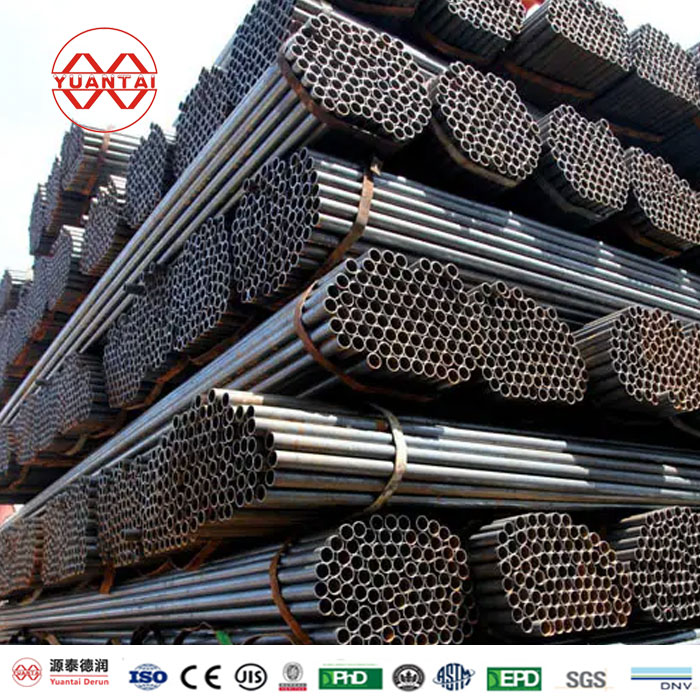
Scaffold Steel Pipe
Introduction to scaffold steel pipe Scaffold steel pipes are generally called scaffold pipes, which is a special term used by people in building or construction. Scaffold steel pip […]
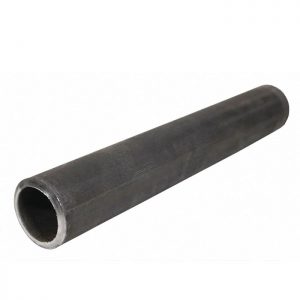
Round Seamless Steel Pipe
Seamless steel pipe is a steel pipe formed by piercing the whole round steel, and there is no weld on the surface, which is called seamless steel pipe. According to the production […]
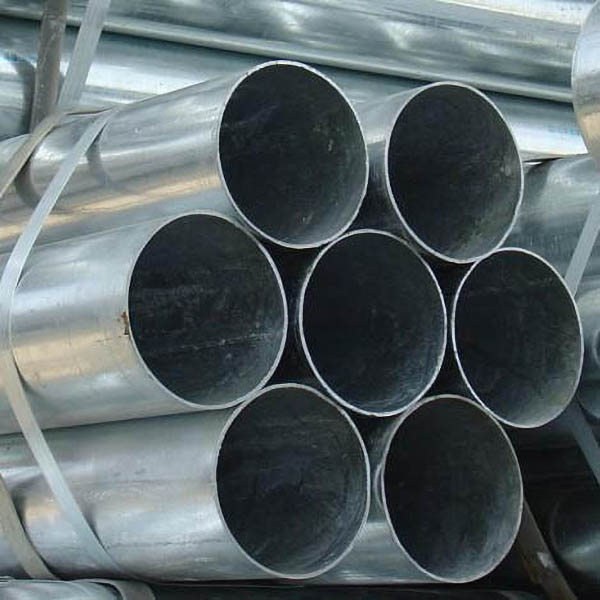
GI Circular Steel Pipe
Galvanized round steel pipe Generally, there are two major categories: pre galvanized round steel pipes and hot-dip galvanized round steel pipes. Hot dip galvanized pipe is to make […]
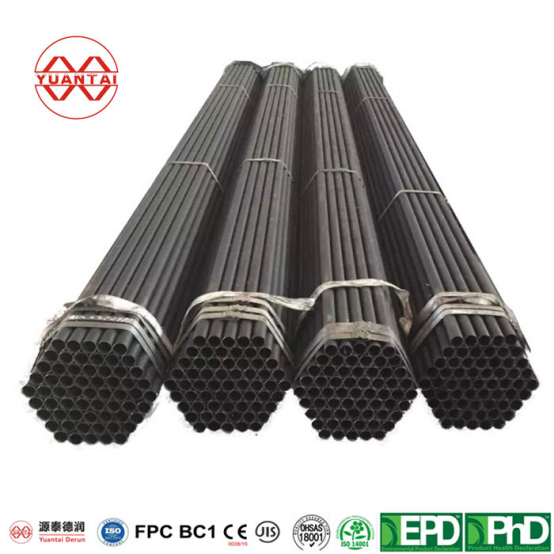
ERW Round Steel Pipe
Standard:Hollow section:ASTM A500/501,EN10219/10210, JIS G3466,GB/T6728/T3094/3091,CSA G40.20/G40.21 Section Shape: round OD(outer meter): 10.3mm-609mm Application: Structural type […]
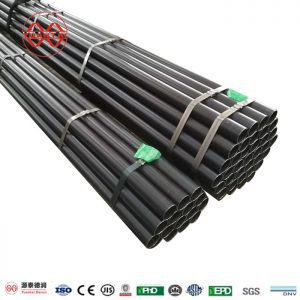
Round Welded Pipe
Since the 1930s, with the rapid development of continuous rolling production of high quality strip steel and the progress of welding and inspection technology, the quality of weld […]
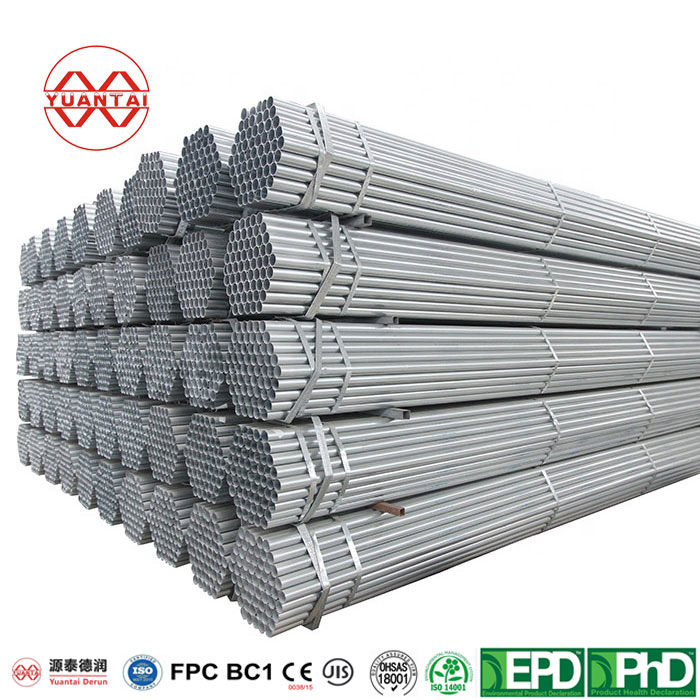
UL797 American Standard Certified EMT Threading Pipe EMT Pipe
OD(outer diameter): 22mm-112mm Thickness: 0.75- 3 mm Place of Origin: Tianjin, China Application: Structural type or fluid transportation Certification:CE,LEED,BV,PHD&EPD,DNV,B […]
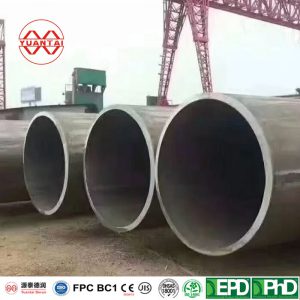
LSAW Steel Pipe(Longitudinally Submerged Arc Welding Tube)
Lsaw Steel Pipe(Longitudinally Submerged Arc Welding Tube) JCOE is a pipe making technology for the production of large diameter thick wall steel pipes. It mainly adopts the produc […]
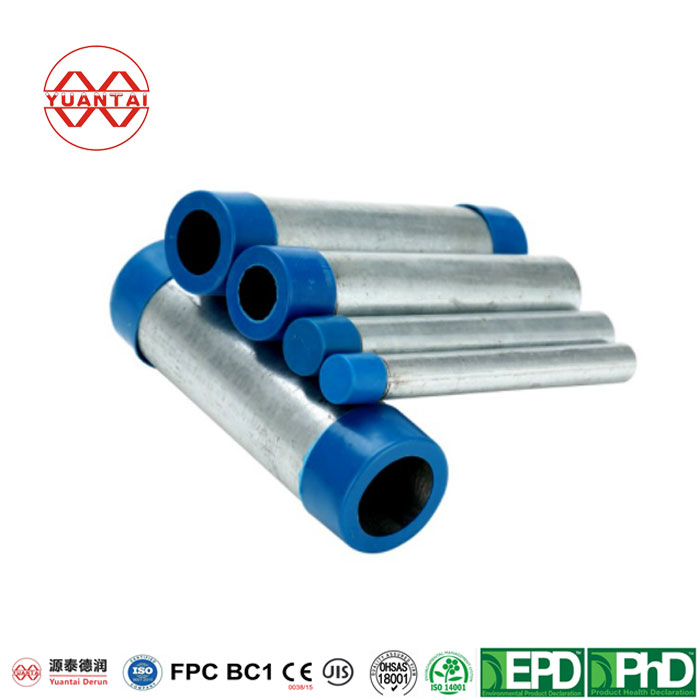
Hot Dip Galvanized Round Steel Pipe
Yuantai Derun Steel Pipe Manufacturing Group produces hot-dip galvanized round steel pipes, which are sold directly by manufacturers, support customization, and have guaranteed qua […]
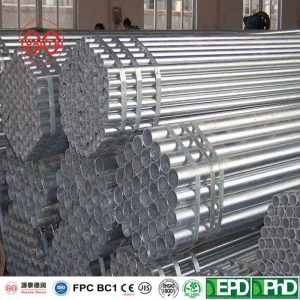
Pre Galvanized Round Steel Pipe
The round pipe with galvanized strip is made of galvanized strip steel, which is generally 0.6MM-2MM. It is processed and formed at one time, with the specification of 15 * 15-100 […]